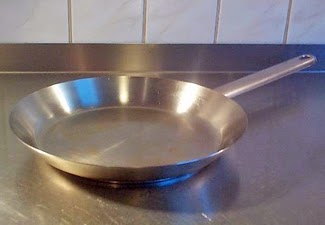Barbeques are popular for events such as the 4th of July, birthday parties, receptions, and going away parties. No matter why you have decided to plan a barbeque party, the memories that will come from it are sure to stick with your guests for many years to come, provided that you plan ahead.
Planning A Bbq Clambake Party
Alternatively, a new popular type of barbeque is a barbeque clambake. Clambakes are typically held in a pit on the beach, but if a beach is not available, you may want to consider holding your clambake right from your grill. Must Have Kitchen Gadgets
1) First, no barbeque would be complete without guests. Plan ahead of time, checking with your potential guest for scheduling conflicts and issues. Finding a date and time that is suitable for everyone should not be to far as long as you everyone enough advanced notice. Remember that not everyone will be able to come, no matter how much notice you give them, so do not get discouraged if you do not get as many RSVPs as your originally hoped for.
2) Be sure to check the weather for that type of year. If you live in a climate that cannot be predicted, then you may want to have a backup plan just incase unusual weather comes. You cannot predict things like rain and thunderstorms ahead of time, but you can make sure that you hold you barbeque during the time of year that will be pleasant to your guests. A barbeque in cold weather may hold more negative memories of trying to keep warm rather then good memories of family and friends.
3) You will need to purchase the items for your clambake. The traditional items you will need is Clams still in the shell, seawater(if available), corn still in the husk, and potatoes.
Side dishes can also be bought, but are not necessary since the potatoes and corn can act as such. If you feel that you need other side dishes, the simplest approach to side dishes is chips and dip. Chips and dip do not require any cooking on your part, and will still be loved by the majority of your guests. Best Kitchen Gadgets 2014-2015
4) Depending on the theme of your party, you may or may not want to purchase decorations. Festive decorations can be found at any local party or general store. You may also consider purchasing decorations that can be stored and reused at a different time, such as reusable tablecloths and Tiki torches. Give your clambake a beach theme by adding tropical music and you may even consider adding some sand.
5) The day before you party, you will want to make sure to thaw, prepare, and marinate the meat you will be cooking. Store the meat stored away, soaking up the marinate until it is time for it to go on the grill. Prepare any side dishes that you can ahead of time.
6) The day of the party, get up early and start preparing for it. You do not want your guest arriving while you are still cooking or hanging decorations. It should only take you a few hours at most to prepare the area in which you will be having the party, but the reactions from your guest will probably seem as if you have been planning this for weeks. Best Kitchen Gadgets Ever
Planning A Bbq Clambake Party
Place your clambake on the grill, layering your already cooked potatoes, corn still in the husk, and your clams on the grill. Then grill these until the corn and clams are complete.
Depending on the time in which your guests arrive, you may want to include you guests in the actual cooking of the clambake. Enjoying a few drinks around the pit or stove will not only give you time to gather and converse, but will also make your guests hungry, as they smell the wonderful aroma coming from the steaming or boiling vegetables and clams.
For More: Visit My Site






